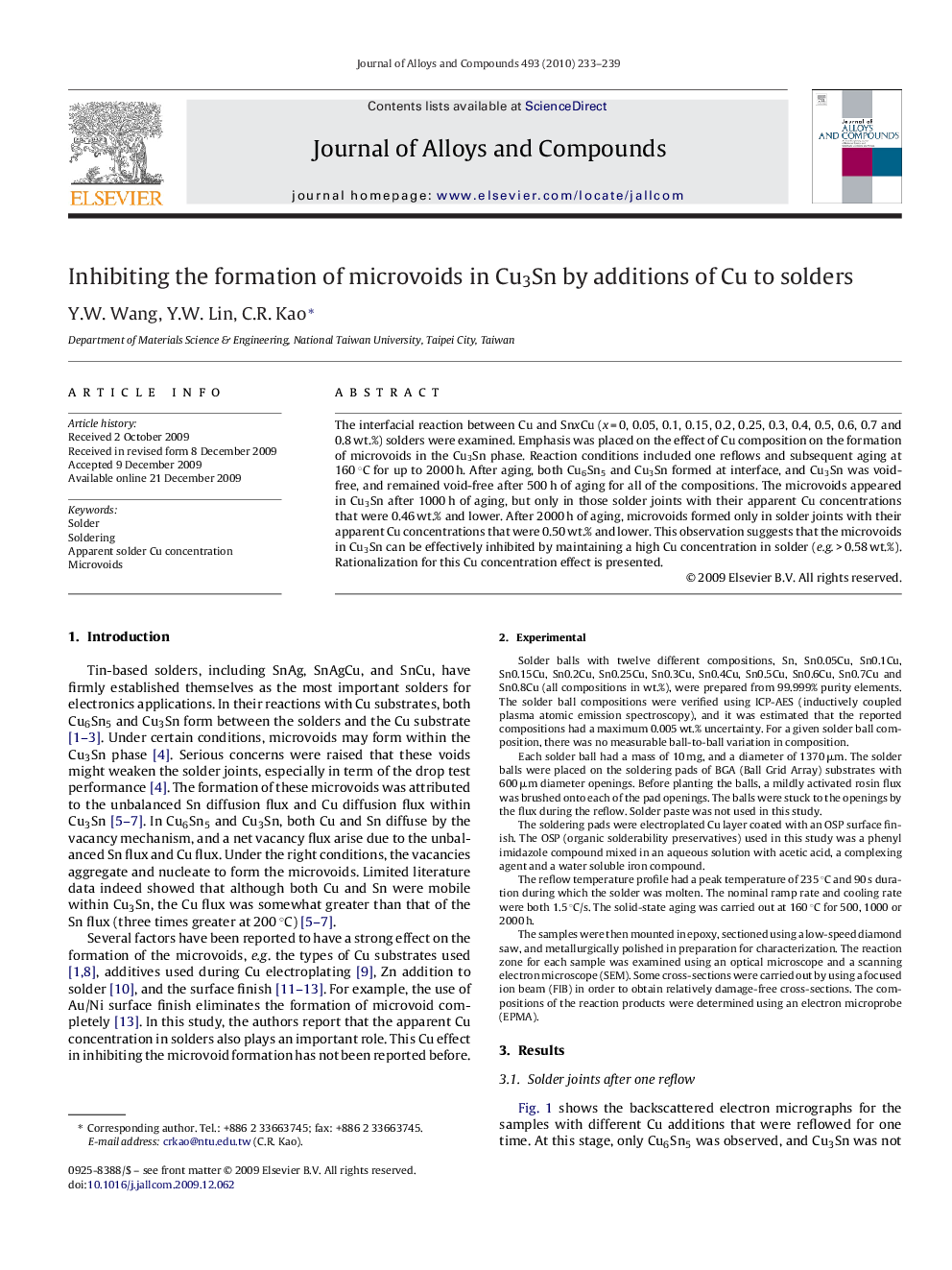| Article ID | Journal | Published Year | Pages | File Type |
|---|---|---|---|---|
| 1619698 | Journal of Alloys and Compounds | 2010 | 7 Pages |
The interfacial reaction between Cu and SnxCu (x = 0, 0.05, 0.1, 0.15, 0.2, 0.25, 0.3, 0.4, 0.5, 0.6, 0.7 and 0.8 wt.%) solders were examined. Emphasis was placed on the effect of Cu composition on the formation of microvoids in the Cu3Sn phase. Reaction conditions included one reflows and subsequent aging at 160 °C for up to 2000 h. After aging, both Cu6Sn5 and Cu3Sn formed at interface, and Cu3Sn was void-free, and remained void-free after 500 h of aging for all of the compositions. The microvoids appeared in Cu3Sn after 1000 h of aging, but only in those solder joints with their apparent Cu concentrations that were 0.46 wt.% and lower. After 2000 h of aging, microvoids formed only in solder joints with their apparent Cu concentrations that were 0.50 wt.% and lower. This observation suggests that the microvoids in Cu3Sn can be effectively inhibited by maintaining a high Cu concentration in solder (e.g. > 0.58 wt.%). Rationalization for this Cu concentration effect is presented.
